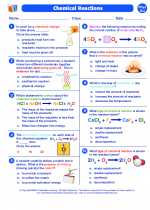Spectrometers
A spectrometer is a scientific instrument used to split light into its constituent wavelengths, producing a spectrum. These devices are widely used in various scientific fields, including physics, chemistry, astronomy, and environmental science.
How Spectrometers Work
Spectrometers work based on the principle of dispersion, which involves separating light into its component colors or wavelengths. The most common type of spectrometer is the diffraction grating spectrometer, which uses a diffraction grating to disperse light.
When light enters the spectrometer, it passes through a slit to create a narrow beam. The light then strikes the diffraction grating, which consists of thousands of closely spaced parallel grooves. As the light interacts with the grating, it gets diffracted, causing the different wavelengths to spread out.
A detector at the other end of the spectrometer captures the dispersed light and records the intensity of each wavelength, creating a spectral pattern.
Types of Spectrometers
There are various types of spectrometers, including:
- Visible and Ultraviolet Spectrometers: These spectrometers are used to analyze the visible and ultraviolet regions of the electromagnetic spectrum.
- Infrared Spectrometers: These spectrometers are designed to analyze the infrared region of the electromagnetic spectrum, which is invisible to the human eye.
- X-ray and Gamma-ray Spectrometers: These spectrometers are used to analyze the X-ray and gamma-ray regions of the electromagnetic spectrum, often in applications such as medical imaging and materials analysis.
Applications of Spectrometers
Spectrometers have a wide range of applications, including:
- Chemical Analysis: Spectrometers are used to identify and quantify the chemical components of substances, making them invaluable in fields such as analytical chemistry and pharmaceuticals.
- Astronomy: Spectrometers help astronomers study the composition, temperature, and motion of celestial objects by analyzing their emitted or absorbed light.
- Environmental Monitoring: Spectrometers are used to analyze pollutants, greenhouse gases, and other substances in the atmosphere, soil, and water, aiding in environmental research and monitoring.
- Material Characterization: Spectrometers are used to investigate the properties and composition of materials, assisting in fields such as metallurgy, nanotechnology, and semiconductor research.
Study Guide for Spectrometers
If you're studying spectrometers, here are some key topics to focus on:
- Principles of Dispersion and Diffraction
- Types of Spectrometers and Their Applications
- Components of a Spectrometer (e.g., diffraction grating, detector)
- Spectral Analysis and Interpretation
- Real-world Applications and Case Studies
Understanding these concepts will provide a strong foundation for comprehending the operation and significance of spectrometers in scientific research and analysis.
.◂Science Worksheets and Study Guides Eighth Grade. Chemical reactions

 Activity Lesson
Activity Lesson
 Worksheet/Answer key
Worksheet/Answer key
 Worksheet/Answer key
Worksheet/Answer key
 Worksheet/Answer key
Worksheet/Answer key
 Worksheet/Answer key
Worksheet/Answer key
 Vocabulary/Answer key
Vocabulary/Answer key
 Vocabulary/Answer key
Vocabulary/Answer key
